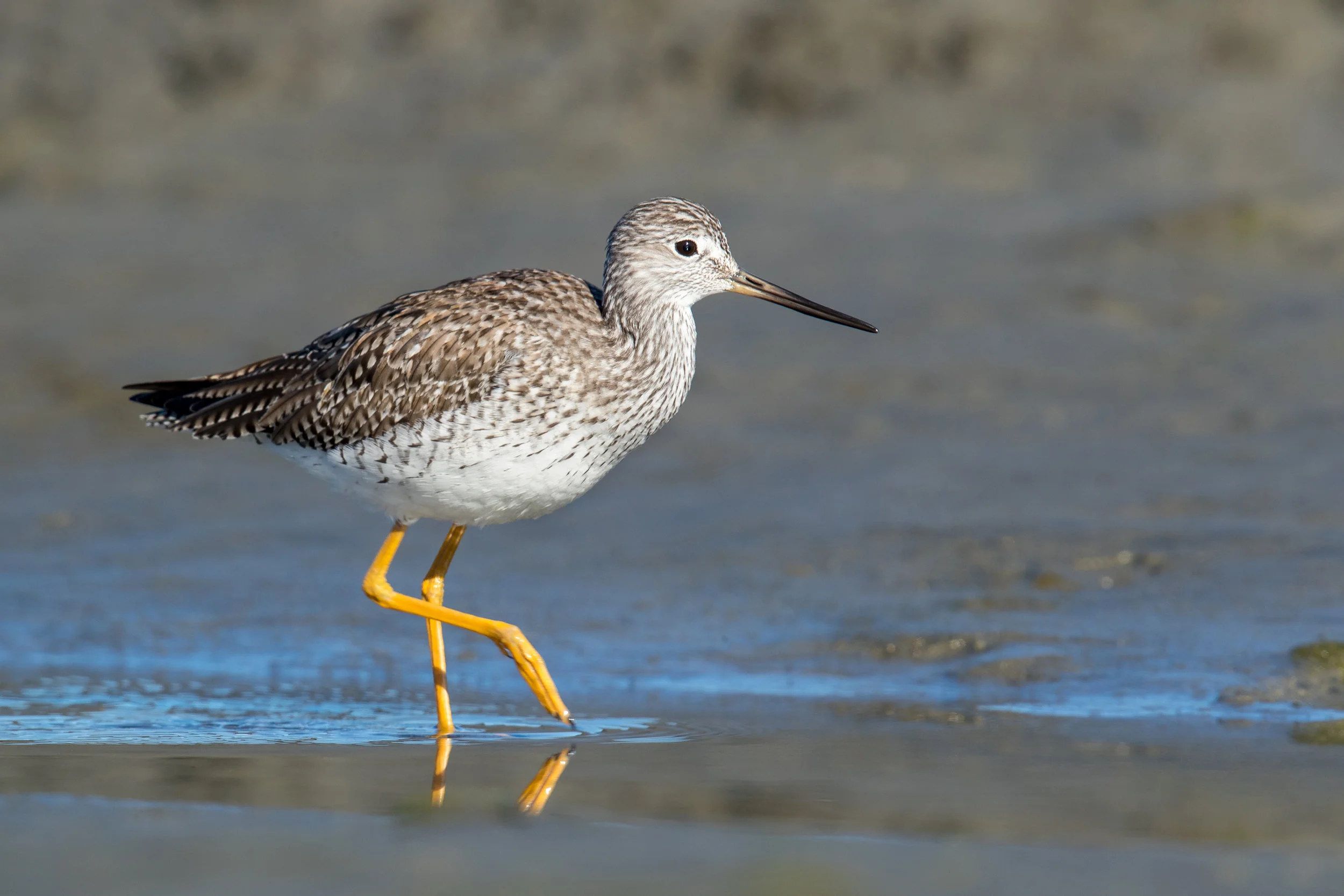Bird of the Month: Greater/Lesser Yellowlegs
By Hugh Jennings
PC: Mick Thompson (Greater Yellowleg)
Scientific Name: Tringa melanoleuca/flavipes
Length 14 in 10-11 in
Wingspan 28 in 24 in
AOU Band code GRYE LEYE
The Greater Yellowlegs (GRYE) is about 14” long with a wingspan of 28” while the Lesser is 10-11” long with a wingspan of 24”. The genus name Tringa (TRING-gah) is from Greek tryngas used by Aristotle for a white-rumped water bird. The Greater’s species name melanoleuca (mel-an-oh-LEW-kah) is from Greek melas, black, and leukos, white, referring to black and white in its plumage. The Lesser’s species name flavipes (FLAY-vih-peez).
Both have long yellow-to-orange legs. When seen together they are distinguishable by size, the Lesser is noticeable smaller. When they are alone they can be separated by bill size. The Greater,s bill is about 1-1/2 times the length of its head and slightly upturned while the Lesser’s bill is about equal to the length of its head and is straight. In summer, the Greater’s head and neck are heavily streaked with black and sides heavily barred with black while the Lesser’s head and neck is finely streaked with black and the side lightly barred with black. In winter, the Greater is grayish overall with faint streaking on head and neck, and the dark bill is gray at the base while the Lesser’s upperparts are grayish with faint streaking on head and neck and the bill is all black. Both show a white rump patch in flight.
Both Greater and Lesser birds summer on subarctic forest bogs and winter on coastal marshes. The Greater usually migrates in small flocks and in the fall, a few may linger in the north quite late in the season. The Lesser tends to migrate a little later in the spring and earlier in the fall than the Greater. On the Washington coasts in winter the Greater is fairly common while the Lesser is usually only seen during migration in the fall.
They both feed primarily on small fish, insects, worms, snails and berries. The Greater often dashes about in shallow water, picks at or skims surface, or swings bill back and forth. The Lesser methodically walks and probes, rarely as animated as the Greater Yellowlegs. The nest is usually a grass-lined depression in the ground. The four eggs are buff colored with marks for the Greater and Yellow-buff with marks for the Lesser. Incubation is 22-23 days with the young fledging 18-20 days later. They only have one brood each year.
The alarm call of the Greater is a series of three notes “tew-tew-tew” while the Lesser is usually one or two notes – “tew” or “tew-tew”.


